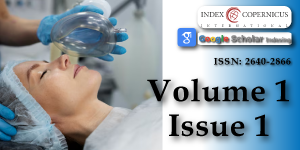Evolution of anaesthesia in transapical aortic valve implantation Running head: Anaesthesia and transcatheter valve
Main Article Content
Abstract
The Transcatheter Aortic Valve Implantation (TAVI) had emerged more and more in the last twenty years. According to the scientific literature, this is an approved, suitable and alternative therapeutic choice to conventional surgery for aortic valve disease in high risk patients. The most of patients are octogenarians or nonagenarians, with multiple comorbidities (neurological,vascular,oncologic, haematological, etc). The evolution of TAVI techniques and its devices have improved the quality of results and reduced the peri- and post-procedural complications. Cardiac anaesthesia and analgesia in TAVI patients is very important and fundamental to a quickly and complete clinical restoring after the procedure. An optimal balance of drugs and peri-procedural management could reduce the neurological events (such as delirium), the days of hospitalization and the admission of intensive care unit. According to our experience in transapical approach, the low dose of propofol and desflurane allowed to optimal cardiac anaesthesia and rapid mechanical ventilation weaning in complex patient undergone to transcatheter valve implantation with transapical approach. Moreover, our protocol reduced considerably the incidence of perioperative delirium.
Article Details
Copyright (c) 2017 Cottini M, et al.

This work is licensed under a Creative Commons Attribution 4.0 International License.
Biancari F, D'Errigo P, Rosato S, Pol M, Tamburino C, et al. Transcatheter aortic valve replacement in nonagenarians: early and intermediate outcome from the OBSERVANT study and meta-analysis of the literature. Heart Vessels. 2017; 32: 157-165. Ref.: https://goo.gl/jKHnDP
Stanska A, Jagielak D, Brzezinski M, Zembala M, Wojakowski W, et al. Improvement of quality of life following transcatheter aortic valve implantation in the elderly: A multi-centre study based on the Polish national TAVI registry. Kardiol Pol. 2017; 75: 13-20. Ref.: https://goo.gl/UgGSNE
Antinori A, Arendt G, Becker JT. HHS Public Access. 2015; 69: 1789-1799.
Vahanian A, Urena M, Walther T, Treede H, Wendler O, et al. EuroIntervention Thirty-day outcomes in patients at intermediate risk for surgery from the SAPIEN 3 European approval trial. EuroIntervention. 2017; 12: 235-243. Ref.: https://goo.gl/UC19vb
Huang PH, Eisenhauer AC. Transcatheter aortic valve replacement using the Edwards SAPIEN transcatheter heart valves. Cardiol Clin. 2013; 31: 337-350. Ref.: https://goo.gl/QUMyWm
Varghese V, George JC. Evolution in transcatheter aortic valve replacement: The Core Valve? self-expanding prosthetic aortic valve. Interv Cardiol. 2012. Ref.: https://goo.gl/wW1kh4

